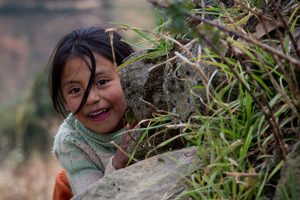
Despite the failed crops, drought, and climate change of recent years, infants in the Andean highlands of Peru weigh more and are taller than ever.
“It’s counterintuitive,” said Dr. Kathryn Oths, a professor of anthropology who has been studying the villagers of Chugurpampa for the last 30 years. “But we think we’ve found what’s going on.”
Oths’ explanation for the apparent paradox, which will be published in the American Journal of Human Biology, surprisingly has little to do with nutrition. Instead, it’s a story about migration and oxygen.
According to Hannah Smith, a 2017 UA graduate who has been working with Oths on the project for the last three years, “Anthropological literature has made it clear that in high-altitude Andean populations, people are stockier, shorter individuals because of high-altitude hypoxia.”
Hypoxia is essentially a condition in which the body does not receive enough oxygen. And when the body has less oxygen, it grows at a stunted rate, especially among infants from birth to age 3.
For decades, the villagers of Chugurpama lived in the hypoxic conditions of the Andean highlands virtually without reprieve because the journey down the mountain to the coast, where oxygen levels are higher, was extremely arduous—taking a day to complete.

However, with the addition of new roads and routine bus travel, Chugurpampans can now make the journey down the mountain in roughly two hours. And with drought and climate change threatening their agricultural livelihood, many Chugurpampans travel down the mountain weekly and biweekly.
“We think that the massive growth for the children between zero and 3 years of age is due to the child’s dependence on his or her parents during that time,” Smith said. “At that age, children are still breast feeding, so they’re going up and down to the coast with their parents—thus relieving the pressure of hypoxia.”
Smith, who began working on the project as an Emerging Scholar and who will continue researching with Oths as a master’s student this fall, says that she hopes the article, for which she has been a co-author, will help anthropologists to revisit the importance of hypoxia in understanding growth development. ■